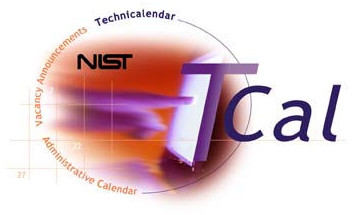
September 15 to September 19, 2008
The NIST Technicalendar is issued each Friday. All items MUST be submitted electronically from this web page by 12:00 NOON each Wednesday unless otherwise stated in the NIST Technicalendar. The address for online weekly editions of the NIST Technicalendar and NIST Administrative Calendar is: http://www.nist.gov/tcal/.
 Special Assistance Available
Special Assistance Available